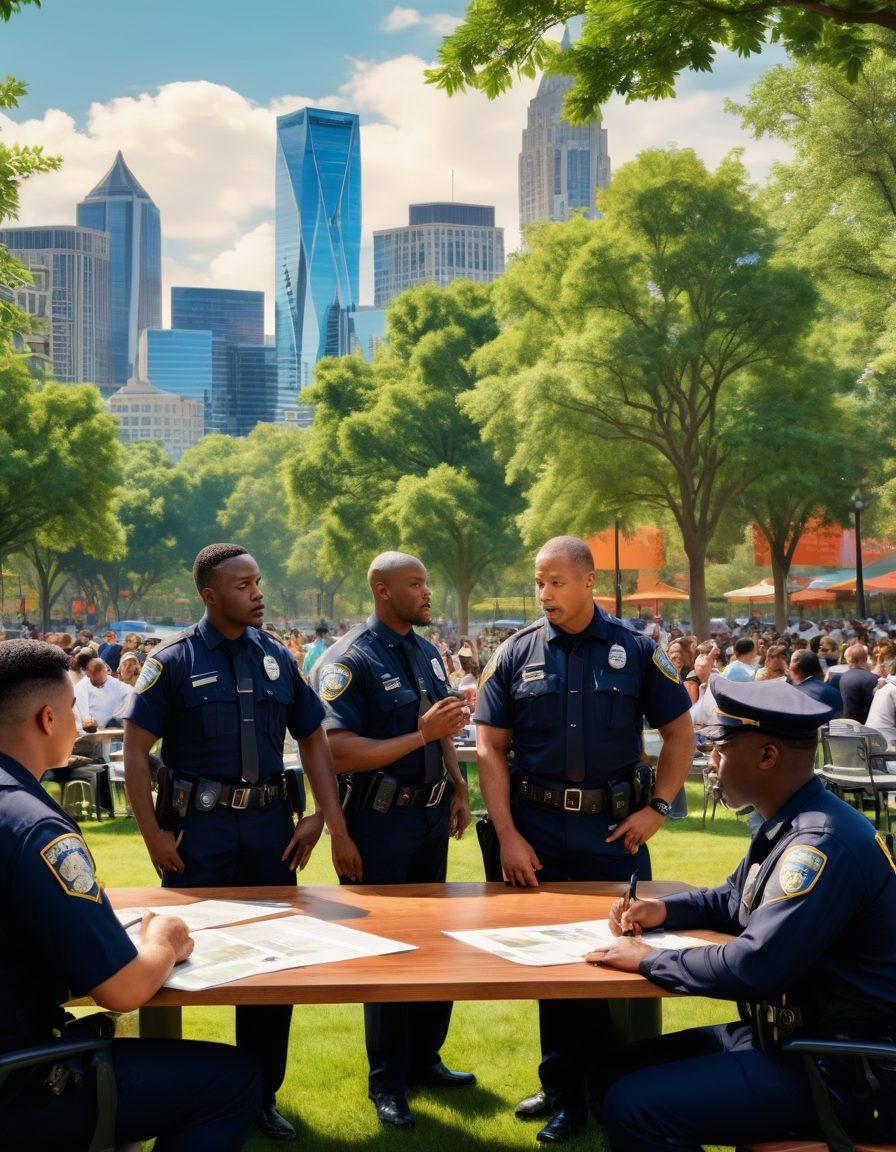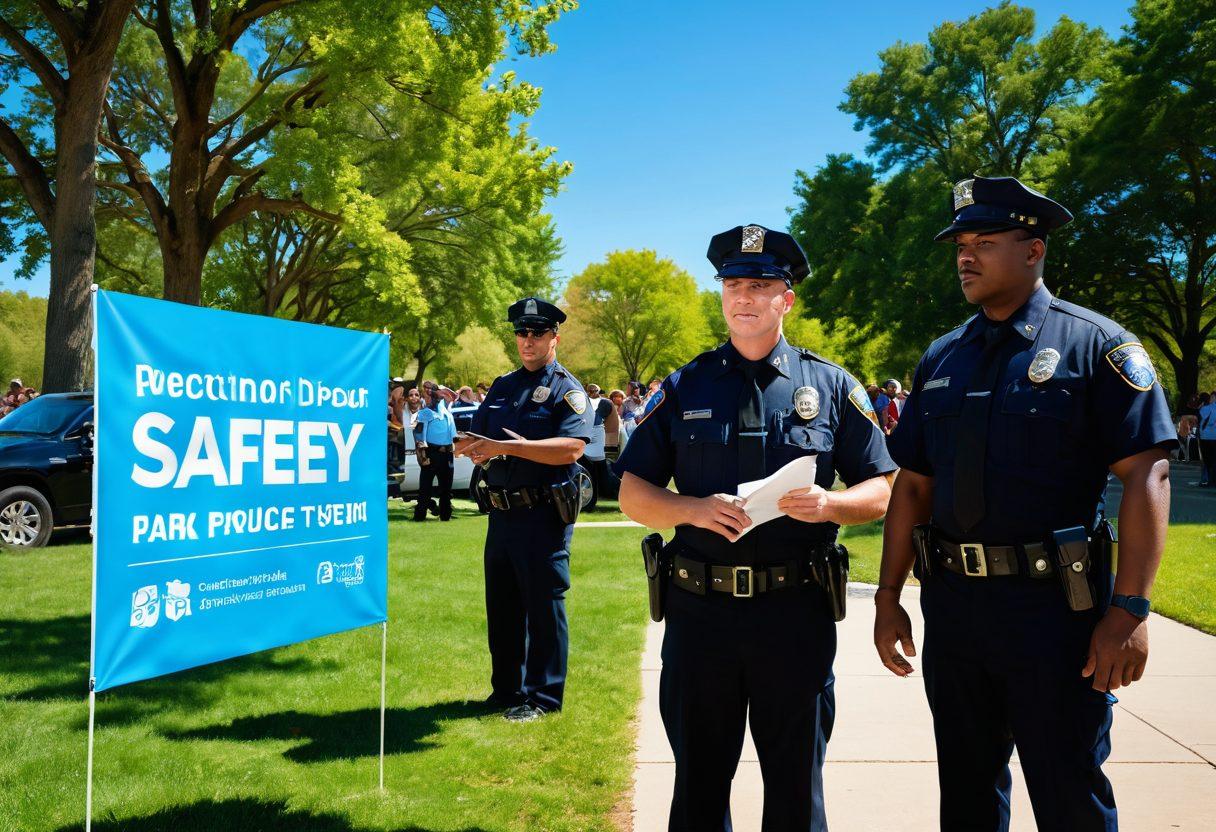Empowering Communities: Effective Crime Control Strategies by National Law Enforcement
Building safer neighborhoods is more than just the responsibility of a law enforcement agency; it requires a partnership between the police and the community they serve. Imagine walking down your street, where every neighbor knows one another, and families gather in parks without a worry. This vision is not merely a dream; it’s a goal that national law enforcement aims to achieve through collaborative efforts with local communities. The goal is to foster public security by implementing effective crime control strategies that not only deter crime but also build trust and understanding between the police and the community.
How does one create a community where safety enforcement is no longer just a police department's job but a collective commitment? It's about collaborative efforts, where citizens become an integral part of the crime investigation process. Law enforcement agencies have begun to introduce community safety programs that empower residents to engage in crime deterrence. For instance, neighborhood watch groups are a prime example of how civilians can play a proactive role in their own safety and that of their neighbors. As the old saying goes, 'It takes a village to raise a child,' and in this case, it takes a community to ensure crime control.
Consider the phrase, 'A strong community is a safe community.' When residents feel connected and involved, they are more likely to report suspicious activities and support law enforcement initiatives. Anti-crime units and regional police officers are using strategies that focus on community-oriented policing. This means that officers don’t just patrol urban areas; they interact with locals regularly. For example, hosting community meetings allows residents to voice their concerns and share insights, making them active participants in order maintenance and promoting violent crime reduction strategies.
Have you ever wondered what makes the difference between a neighborhood floundering in crime and one that flourishes in safety? The answer often lies in proactive preventive measures taken by both law enforcement and community citizens. Safety patrols, consisting of both officers and volunteers, walk the streets, engage with residents, and provide a reassuring presence. These initiatives not only deter crime but also reinforce relationships where trust can blossom, transforming the once rigid and fearful barriers between residents and police into open lines of communication.
In conclusion, the concept of civility and safety does not lie solely in the hands of a peacekeeping force but rests in the interconnected network between law enforcement and communities. When national law enforcement agencies prioritize such partnerships through innovative community safety programs, they redefine what it means to protect and serve. As we step into the future, we should keep asking ourselves: How can we continue to foster stronger ties between our police and our communities? Because the answer might just hold the key to building our cities as havens instead of battlefields.
Innovative Crime Control: Strategies that Elevate Public Safety and Civic Engagement
In an era where public safety and community well-being are at the forefront of our collective consciousness, innovative crime control strategies have emerged as a beacon of hope. National law enforcement is not just about enforcing laws; it's about building partnerships that elevate public safety and foster civic engagement. How can these strategies transform the relationship between law enforcement agencies and the communities they serve? Let’s delve into some impactful initiatives that can lead to safer neighborhoods and empowered citizens.
Imagine a neighborhood bustling with life yet feeling secure—that’s the goal of modern crime control strategies. When law enforcement departments embrace urban policing, they move beyond traditional methods of policing into closer community involvement. By creating safety patrols and working alongside anti-crime units, they not only deter crime but also foster a sense of togetherness. Are we doing enough to integrate public security measures with community engagement? The answer could lie in how proactively citizens partake in crime deterrence activities.
Community safety programs play a crucial role in shaping effective safety enforcement. By engaging civilians in these initiatives, national law enforcement can cultivate a culture of trust and collaboration. From neighborhood watch schemes to youth engagement programs, what are the innovative ways we can get every citizen involved? The essence of civil protection is in making individuals feel empowered, ensuring that they have a stake in their own safety. Engaging local communities in crime investigation efforts reinforces the idea that safety isn’t solely the responsibility of the police department; it’s a collective effort.
One fascinating approach to order maintenance lies in the power of technology and data. By utilizing the latest technologies, law enforcement agencies can establish a proactive presence that predicts and prevents crime. Think of predictive policing and real-time crime mapping; these tools aid the peacekeeping force in addressing potential issues before they escalate—creating a truly dynamic approach to crime control. How can we enable regional police forces to harness technology effectively without compromising civil liberties?
While national law enforcement strategies are essential for managing crime, the relationship with the community is what ultimately defines public safety. Programs promoting transparency and citizen dialogues can help bridge gaps and shape a shared vision for safety. By working together through community-led safety initiatives, citizens and police can harmonize efforts in creating a safer environment. What sort of concerted effort is needed today to encourage more significant participation in these programs? Exploring these questions not only sheds light on best practices but also underlines the vital role of every citizen in enhancing community safety.
From Prevention to Protection: The Role of Law Enforcement in Enhancing Community Security
In the pursuit of community safety, the line between prevention and protection is often blurred. But what exactly is the role of national law enforcement in enhancing the security of our neighborhoods? A sense of security is not just about the absence of crime; it's about the feeling of safety and surveillance that supports a thriving community. Law enforcement agencies across the globe have realized that effective crime control extends beyond mere law enforcement—it encompasses community engagement, civic responsibility, and the implementation of programs designed to foster public security. The question arises: how can we ensure that our communities remain safe and secure?
Imagine a neighborhood where the sound of laughter resonates through the streets, children play freely, and families retire for the night feeling at ease. This peaceful environment is the result of robust crime deterrence measures put in place by national law enforcement agencies. From anti-crime units patrolling the streets to urban policing initiatives aimed at addressing root causes of crime, these efforts make a significant impact. As safety patrols encounter challenges—whether it be rising crime rates or community distrust—what strategies can they employ to foster cooperation and trust between the police department and the residents?
One key element of enhancing community safety lies in effective communication. A thriving partnership between law enforcement and civilians can make a world of difference in crime investigation and order maintenance. Imagine a community crime prevention program where residents actively report suspicious activity to their local police department, fostering an atmosphere of vigilance and care. These civilian protection efforts are pivotal, reminding us that safety is not solely the responsibility of law enforcement but rather a collective effort. What if community members took ownership of their safety through engagement with police initiatives?
Prevention is undeniably more advantageous than attempting resolution post-crime. This is where the role of safety enforcement becomes crucial. The establishment of regional police force collaborations and community safety programs allow for diverse ideas and techniques to shape a healthier environment. Think of a peacekeeping force, one that embodies not solely enforcement but also education, mentorship, and outreach. How can a proactive mindset among police departments and citizens work together to create a sustainable safety net?
At the end of the day, the vision of a united front—law enforcement and community members alike—must revolve around shared goals: the assurance of peace, cooperative crime control strategies, and uplifting community spirit. Every individual has a part to play in this narrative. Through educating our citizens, investing in safety programs, and maintaining open channels for dialogue with regional police, we can bring our collective vision for safety to fruition. Are you ready to join hands with your local law enforcement to advocate for a safer community, and contribute to the legacy of resilient public security?


